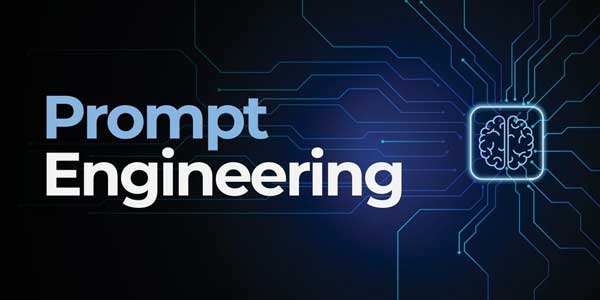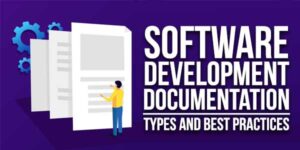
You know that feeling when you’re talking to ChatGPT or Midjourney, and you just can’t get it to understand what you really want? You type something, get a mediocre response, then spend the next 20 minutes trying to rephrase, clarify, and basically play a game of AI charades.
I’ve been there too. In fact, I remember spending an entire afternoon trying to get an AI to write a simple email that didn’t sound like it was written by a corporate robot from 1998. Frustrating, right?
Then I discovered something that changed everything: prompt engineering.
And no, it’s not some fancy tech jargon reserved for computer scientists. It’s actually something you can start using today to get dramatically better results from any AI tool. Let me show you what I’ve learned.
Table of Contents
So, What Exactly Is AI Prompt Engineering?
If I had to explain it over coffee, I’d say prompt engineering is simply the art of asking AI the right questions in the right way. It’s learning how to speak the AI’s language so it understands exactly what you want.
The technical definition goes something like this:
AI prompt engineering is the practice of designing and refining input prompts to guide artificial intelligence systems toward producing more accurate, relevant, and useful outputs. It involves understanding how different AI models interpret language and structuring requests in ways that maximize the quality of the generated content.
But here’s what that really means in practice: it’s the difference between getting generic, meh content and getting exactly what you envisioned. It’s like learning the difference between saying “make me food” to a chef versus giving them a detailed recipe.
Why Should You Even Care About Prompt Engineering?
I get it – learning another skill sounds exhausting. But what if this one could save you hours every week?
Think about how you use AI right now. Maybe you’re trying to write a blog post outline using AI, or create social media content, or even just get help with emails. Now imagine doing all that in half the time with twice the quality.
That’s the power of good prompt engineering. It transforms AI from a sometimes-helpful tool into your most reliable creative partner.
The Building Blocks of a Killer Prompt
After months of experimenting (and plenty of failed attempts), I’ve found that great prompts usually contain these key elements:
Role-Playing: Give Your AI a Personality
This is probably the single most powerful technique I’ve discovered. Instead of just asking for content, you tell the AI who it should be.
For example, which prompt do you think will get better results?
Basic prompt: “Write about healthy eating”
Engineered prompt: “Act as a nutritionist with 15 years of experience working with busy professionals. Write a friendly, practical guide to healthy eating for people who work long hours and have limited time for meal prep.”
See the difference? The second prompt gives the AI context, direction, and a specific voice to emulate.
Context Is King: Set the Scene
AI doesn’t know your audience, your brand voice, or your specific situation unless you tell it. The more context you provide, the better the results.
When I’m creating content for my blog, I might share:
- Who my target reader is (busy small business owners, not corporate executives)
- The tone I want (conversational, not academic)
- The goal of the piece (to educate, not to sell)
- Any specific points I want covered
Constraints Spark Creativity
This might sound counterintuitive, but limitations often produce better results. Telling an AI “write a blog post” is overwhelming. Telling it “write a 500-word introduction to SEO for complete beginners using simple analogies” gives it clear boundaries to work within.
Real-World Prompt Engineering Examples
Let me show you some actual examples from my work that demonstrate the transformation from basic to engineered prompts.
Example 1: From Generic Blog Post to Targeted Content
Before (Basic Prompt):
“Write a blog post about productivity”
After (Engineered Prompt):
“Act as a productivity coach specializing in helping freelance writers. Write an 800-word blog post titled ‘5 Unconventional Productivity Tips for Writers Who Hate Morning Routines.’ The tone should be humorous but practical, speaking to writers who feel guilty about not being ‘morning people.’ Include specific examples they can implement immediately. Structure it with an engaging introduction, 5 clear tips with explanations, and a motivating conclusion.”
The difference in output quality is night and day. The first gives you generic advice you could find anywhere. The second produces content that feels like it was written specifically for your audience.
Example 2: From Vague Request to Specific Social Media Strategy
I was working on a social media calendar for a client and needed content ideas.
Before:
“Give me social media post ideas”
After:
“You’re a social media manager for a small eco-friendly yoga wear brand. Our audience is women aged 25-45 who practice yoga regularly and care about sustainability. Create a week’s worth of Instagram post concepts that include: 2 educational posts about sustainable fashion, 1 behind-the-scenes content idea, 1 user-generated content prompt, and 1 product highlight that doesn’t feel salesy. For each concept, provide the post copy concept and relevant hashtags.”
Example 3: Technical Content Made Accessible
When I needed to explain a complex topic like Google Passkey to non-technical readers, I used this prompt:
“Explain Google Passkeys as if you’re talking to your grandmother who barely uses technology. Use simple analogies and avoid technical jargon. Focus on why she should care about it and how it makes her online life easier and more secure. Keep it under 400 words.”
The result was one of the most-complimented pieces I’ve written – clear, helpful, and perfectly pitched to my audience.
My Personal Prompt Engineering Workflow
After countless experiments, I’ve developed a simple 4-step process that works for almost any AI task:
Step 1: Define the Destination
Before I type anything, I ask myself: What does success look like? What specific outcome do I want? Getting clear on this first saves so much time.
Step 2: Provide the Context Kit
I imagine I’m briefing a human assistant. What would they need to know to do this job well? I include:
- The goal
- The audience
- The tone
- Any key points to include
- What to avoid
Step 3: Iterate and Refine
My first prompt is rarely perfect. I look at the output and ask: What’s missing? What needs adjustment? Then I refine my prompt accordingly.
Step 4: Add the Human Touch
Even the best AI content needs human editing. I always review, tweak, and add personal anecdotes or insights.

Common Prompt Engineering Mistakes (I’ve Made Them All)
Learning prompt engineering is as much about avoiding pitfalls as it is about mastering techniques. Here are the big ones I’ve learned to avoid:
Being Too Vague
Early on, I’d write prompts like “make it better” or “be more creative.” The AI has no idea what “better” or “creative” means to you. Now I’m specific: “Make the tone more conversational by using contractions and simpler sentences” or “Add three creative metaphors to explain this concept.”
Overloading with Instructions
There’s a sweet spot between too little and too much information. I once wrote a prompt that was essentially a novel – the AI got confused and produced gibberish. Now I focus on the 3-5 most important instructions.
Forgetting the Audience Context
I wrote what I thought was a brilliant prompt for a blog post outline, but the result was too technical. I’d forgotten to specify “for complete beginners.” Now I always include audience details.
Advanced Prompt Engineering Techniques
Once you’ve mastered the basics, here are some pro techniques that have taken my AI interactions to the next level:
The “Chain of Thought” Method
This involves asking the AI to think step-by-step. Instead of “what’s the answer,” you ask “think through this problem step by step and explain your reasoning.” The results are often more accurate and insightful.
Template Prompts
I’ve created templates for common tasks – blog outlines, email sequences, social media posts. I just fill in the specifics each time. It’s like having custom-built AI tools for my recurring needs.
Negative Instructions
Sometimes it’s as important to tell the AI what not to do. “Don’t use corporate jargon,” “Avoid making claims we can’t support,” or “Don’t mention [specific topic].”
Putting It All Together: Your Prompt Engineering Journey
When I started learning about prompt engineering, I felt overwhelmed. There seemed to be so much to remember. But here’s the secret: you don’t need to master everything at once.
Start with one technique. Maybe this week, you focus on adding role-playing to your prompts. Next week, you work on providing better context. Small, consistent improvements add up faster than you’d think.
Remember that time I mentioned earlier, struggling to write that simple email? With what I know now, I could craft the perfect prompt in under a minute and get a great result on the first try. That’s the transformation prompt engineering offers.
It’s not about becoming a technical expert. It’s about learning to communicate clearly with the AI tools that are increasingly part of our creative workflow. And honestly? It’s kind of fun once you get the hang of it.
So why not try it today? Take one AI task you were planning to do anyway and spend an extra minute crafting a more detailed, specific prompt. See what happens. I think you’ll be pleasantly surprised.
Frequently Asked Questions (FAQs)
Do I need technical skills to learn prompt engineering?
Not at all! Prompt engineering is more about communication and clarity than technical knowledge. If you can write clear instructions for a human, you can learn to write good prompts for AI.
How long does it take to get good at prompt engineering?
You can see significant improvement in your results within a few days of focused practice. Mastery takes longer, but the learning curve is surprisingly gentle once you understand the basic principles.
Does prompt engineering work with all AI tools?
The core principles work across most AI systems, but different tools may have specific quirks. What works perfectly in ChatGPT might need slight adjustment for Midjourney or Claude.
Can good prompt engineering replace human creativity?
No – it enhances it. The best results come from combining well-engineered prompts with human judgment, editing, and creative direction. Think of AI as a creative partner, not a replacement.
What’s the most common mistake beginners make?
Being too vague. “Write something good” gives the AI nothing to work with. Specificity is your best friend when crafting prompts.
Should I use very long, detailed prompts?
There’s a balance. Too little detail produces generic results, but extremely long prompts can confuse the AI. Focus on including the most important context and instructions rather than every possible detail.
How important is the role-playing aspect?
Extremely important. Giving the AI a specific role (like “act as an experienced nutritionist”) often produces dramatically better results than generic requests.
Can I use prompt engineering for visual AI like Midjourney?
Absolutely! The principles are similar but applied differently. Instead of describing tone and audience, you might describe visual style, composition, lighting, and mood.
Will AI tools eventually get so good that prompt engineering won’t matter?
As AI improves, it might get better at understanding vague requests, but clear communication will always produce better results. The principles of good prompt engineering are essentially the principles of clear thinking and communication.
Where’s the best place to practice prompt engineering?
Start with whatever AI tool you use most frequently. The key is to experiment deliberately – try different approaches, compare results, and learn what works best for your specific needs.


















Be the first to write a comment.